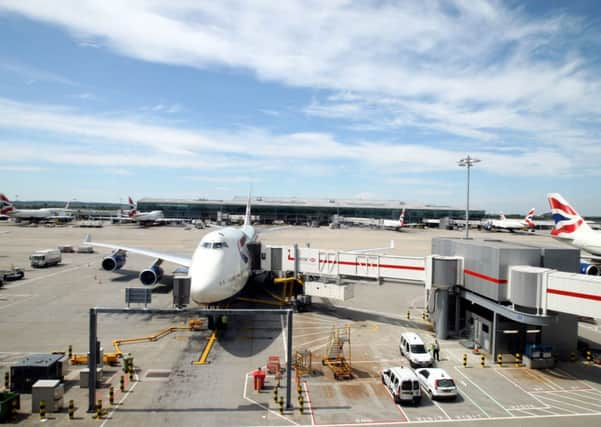No surge in Romanian and Bulgarian migrants to UK


The surge of immigrants predicted by some has yet to materialise, according to figures released by the Office for National Statistics (ONS) yesterday.
A total of 140,000 citizens from the two eastern European countries were employed in the UK between January and March, the ONS said, a drop of 4,000 when compared with the 144,000 employed in the last three months of 2013.
Advertisement
Hide AdAdvertisement
Hide AdDespite the fall in recent months, the statistics showed that there was a rise of 25 per cent when the 140,000 currently employed was compared with the 112,000 Romanians and Bulgarians working this time last year.
Warnings of an influx of immigrants from the so-called A2 countries had been triggered by the relaxation of temporary curbs imposed on the nations when they joined the EU in 2007.
Until they were lifted on 1 January this year, the curbs meant that Romanians and Bulgarians had to seek a work permit.
In the run-up to the lifting of the restrictions, estimates of the Romanian and Bulgarian influx differed wildly.
At the top end of the scale was a prediction by the American think-tank The Democracy Institute which suggested that 385,000 people will migrate from Romania and Bulgaria to the UK over the next five years.
The pressure group Migration Watch, which has deep concerns about the scale of immigration into the UK, suggested 50,000 people per year. A more conservative estimate was provided by a UK government report, which, in 2010, forecast that 8,000 Romanians would come to Britain in 2014.
The forecasts were accompanied by predictions of an increase in pickpocketing, mugging, beggars on the streets and rioting.
At the turn of the year, claims of fully booked flights and coaches from Bucharest and Sofia proved incorrect.
Advertisement
Hide AdAdvertisement
Hide AdYesterday, Keith Vaz MP, chairman of the home affairs select committee, said: “These figures are unsurprising. The committee viewed for itself how the supposed flood of immigration from Romania and Bulgaria was little more than a trickle. It would appear now that many may have actually left the UK.
“By not understanding the likely levels of immigration, we risk increasing the poisonous rhetoric and prejudice which leads to the destruction of all rational debate. We must not have an immigration arms race.”
SNP European election candidate Tasmina Ahmed-Sheikh said: “It is evidence like this which shows the absolute folly of the Westminster parties pandering to Ukip on immigration.”
Migration experts urged caution when approaching yesterday’s figures, arguing it was “too early” to know the long-term implications of lifting the restrictions.
ANALYSIS
Rob McNeil: Too soon to reach conclusions about Romanian and Bulgarian migrants
New data from the Office for National Statistics (ONS) have shown a small drop of about 4,000 in the number of Romanian and Bulgarian-born people employed in the UK in the first three months of 2014 – the period immediately after restrictions on the employment of migrants from these countries ended.
Much has been made in some newspapers about what impact the lifting of these controls would have on the numbers of Romanian and Bulgarian (“A2”) migrants, with regular suggestions that the number would increase sharply.
So it is tempting to conclude that the new Labour Force Survey data – showing the opposite has happened and that, actually, fewer Romanian and Bulgarian people are now working in the UK than at the end of last year – proves these stories wrong. But it is far too early to tell. Migration data are often contradictory.
Advertisement
Hide AdAdvertisement
Hide AdBold claims about what little effect the lifting of restrictions will have on the numbers of Romanians and Bulgarians working in the UK over the next year are premature.
Claims of this sort, based on a single quarter of evidence from one source, are nearly as risky as the predictions last year that lifting work restrictions would lead to a sudden “flood” of A2 migrants. Until now, there has been a consistent pattern of increased numbers of A2 migrants working in the UK in the first quarter of each year, compared to the last quarter of the previous year, in every year except one (2009-10) since the two countries joined the EU in 2007.
This Q4-Q1 increase has regularly exceeded 10,000, and sometimes (2010-11) exceeded 20,000 despite the transitional controls being in place.
The changes that we see in the new data cannot really be seen as a result of the end of controls on the employment opportunities of A2 migrants. It is important that we see the data for what they are – an important first step in understanding how A2 migration is changing – but until we have complete data for 2014 it is impossible to achieve any definite conclusions.
• Rob McNeil is head of communications at Oxford University’s Migration Observatory
SEE ALSO